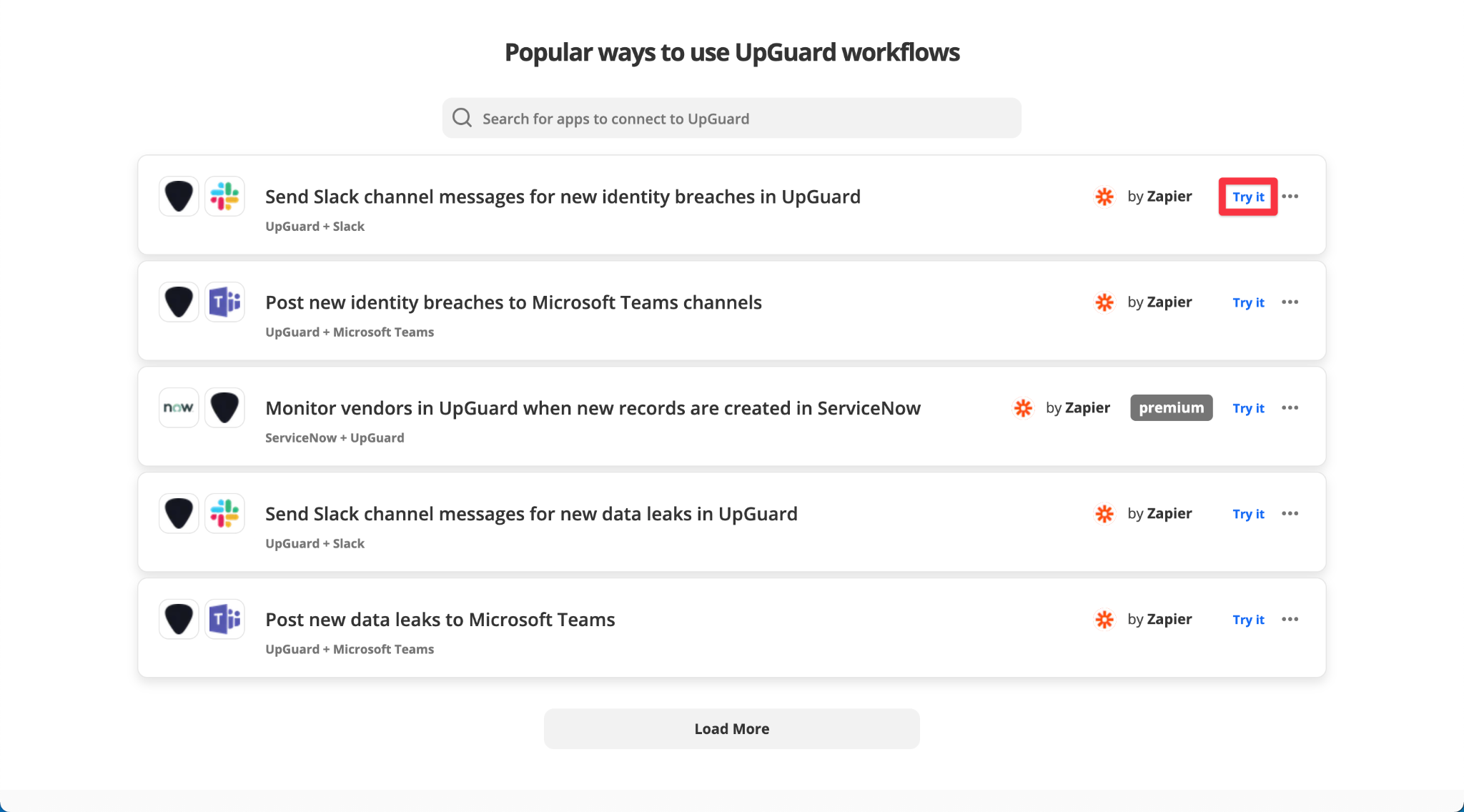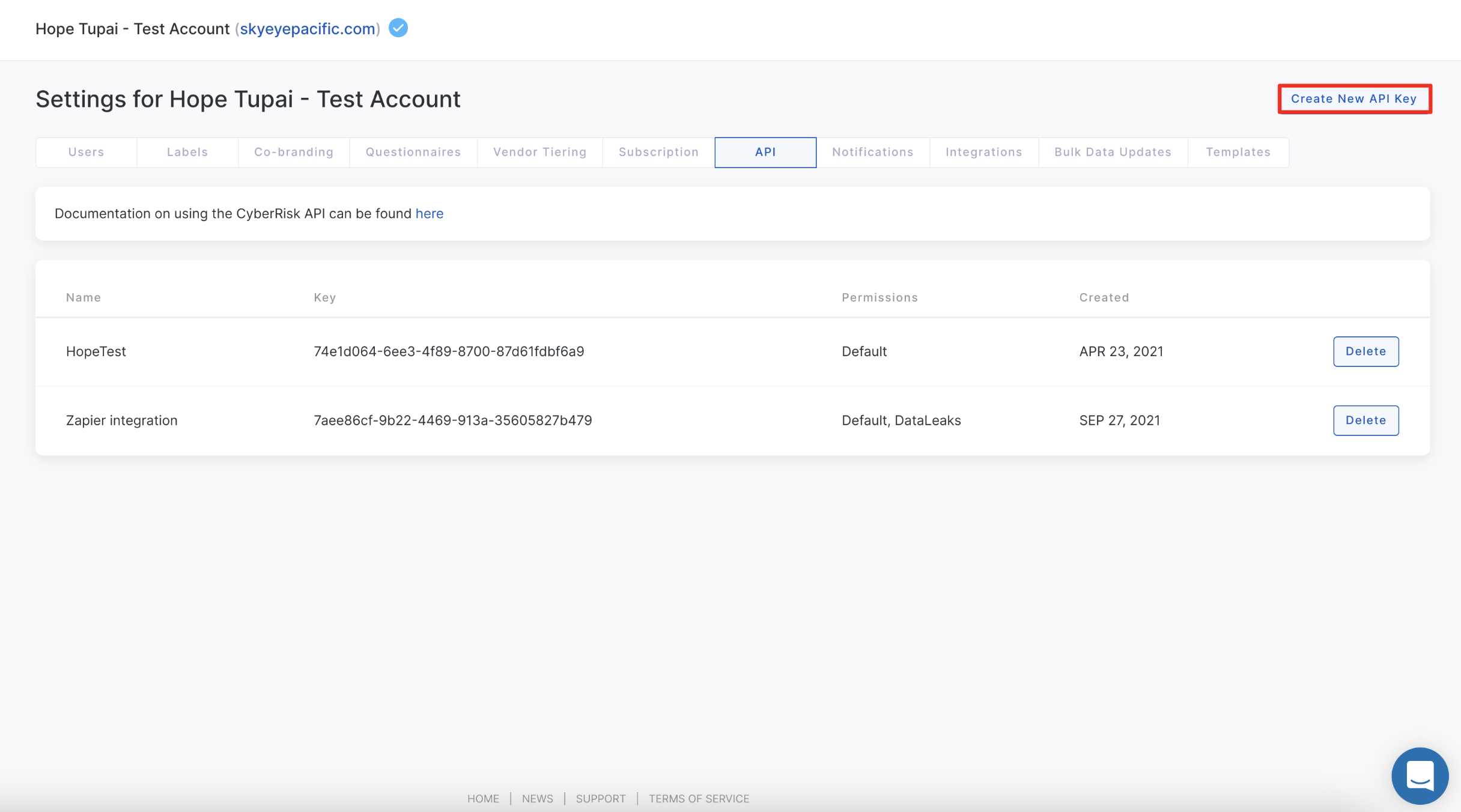How to get started with UpGuard on Zapier
Learn about how you can use Zapier to integrate UpGuard with over 4,000+ apps
Zapier is a tool that helps you automate repetitive tasks between two or more apps without code. UpGuard’s Zapier integration allows you to integrate UpGuard with over 4,000 apps that are available in the Zapier App Store.
What should/can I automate with Zapier?
-
Tasks you frequently do: Such as adding vendors to UpGuard when a vendor onboarding form is completed.
-
Anything where you have to move information from UpGuard to another app: For example, creating Jira tickets when any vendor’s score drops below a threshold.
-
Tasks that don’t require much thought: Such as notifying your security team in Slack when an identity breach is detected.
How does Zapier work?
The basic idea behind Zapier is that when an event happens in one app, Zapier can tell another app to perform (or do) a particular action. In short, “When this happens, do that”. Even the most complex automation can be broken down into this simple command.
For example:
When
A data leak is detected by UpGuard
Then
Call our security team via Twilio
(You can create this exact automation by using this template)
How to create your first UpGuard Zapier integration
The easiest way to get started with Zapier is to use one of the workflow templates that we’ve outlined on our Zapier App Store page. Please note that we use API-based authentication for our Zapier automation, so you’ll need to be an admin of your UpGuard account to set up the automation. You’ll also need to enable the Data Leak permission on the API key if you want to use the Data Leak-based triggers/searches.
Simply scroll down until you see the heading Popular ways to use UpGuard workflows and then click Try it next to the corresponding workflow.

From here, you’ll be guided through how to create your first Zap by Zapier. If you’re having trouble, we recommend reviewing Zapier’s knowledge base here or contacting support for further assistance.
What triggers are available?
The following triggers are available:
-
New identity breach: Triggers when a new identity breach is detected.
-
New data leak: Triggers when a new data leak is published.
-
New monitored vendor: Triggers when a new vendor is monitored.
-
Vendor score increase: Triggers when a vendor score increases by a given amount in the specified period.
-
Vendor score drop: Triggers when a vendor score drops by a given amount in the specified period.
-
Vendor score above threshold: Triggers when a vendor score rises above the given amount.
-
Vendor score below threshold: Triggers when a vendor score drops below the given amount.
-
Organization score increase: Triggers when your organization score increases by a given amount in the specified period.
-
Organization score drop: Triggers when your organization score drops by a given amount in the specified period.
-
Organization score below threshold: Triggers when your organization score drops below the given amount.
If a trigger you would like is missing, please contact support.
What actions are available?
The following actions are available:
-
Monitor vendor: Monitors a new vendor.
-
Find a data leak: Search for a data leak by ID
-
Find an identity breach: Search for an identity breach by ID
-
Find a vendor by ID: Search for a vendor by ID
-
Find a vendor by hostname: Search for a vendor by hostname.
If an action you would like is missing, please contact support.
How to create or find an API key in UpGuard
To create or find an API Key in your UpGuard account, please click here. Your screen should be similar to below. Click Create New API Key or use one of the existing keys from the table. Remember, if you want to use a data leak-based trigger or action, you’ll need to use an API key with data leaks permissions.

See also
